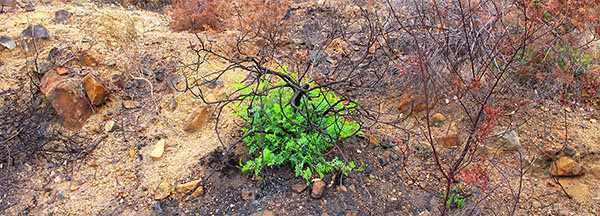
Research
The MoA research group „Adaptive Fibrous Materials“ is interested in interactions between a biological material and its environment. The fact that plants are sessile make them particularly interesting regarding their adaptability and optimization strategies – there is no way for them to escape. Remodeling processes, such as those found in the animal kingdom, are absent and adaptation takes place by growth. Interestingly, a large proportion of the newly formed cells dies after a short period of time in order to take over the function of a water transporting- or mechanical supporting element. Over time the properties and functions of these dead cells can change; but at any time they depend on the temperature and humidity of the environment. This requires an intrinsic activity of the material. Prominent examples are wood swelling and shrinkage and seed capsule opening or seed dispersal, which becomes active upon an environmental trigger.
Our work is not restricted to plants, other fibrous materials such as the nests of African wild silk moths are also studied in the group.
We work towards a deep understanding of material activity, adaptation- and optimization strategies and explore material properties under consideration of developmental stages (growth) and the environmental conditions in the field or in the lab. The results provide information about functions of the organism and hints how changing environmental conditions affect the organism. Furthermore, they provide fundamental knowledge for usage and applications of biogenic materials and extracted material concepts can serve as inspiration for biomimetic applications.
We combine materials science tools at various length scales and design experiments in our hands-on work. Interdisciplinary collaborations with colleagues from the social sciences, architects and designers through the excellence cluster Matters of Activity (MoA) allow a comprehensive consideration and discussion of our research topics.